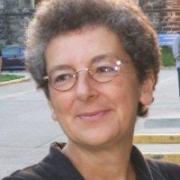How the Earth Became a Collection of Land Uses: Urban Planning and Law in Historical Perspective
Mariana Valverde
Professor of Criminology,
University of Toronto
Abstract
Today, planners, local politicians, and civic activists discuss urban design and planning issues using 'land use' as the basic unit of spatial analysis. The historical shift by which we came to think about urban space as a set of land uses is not well understood, however. The lecture will demonstrate that while land-use thinking was to some extent a replacement for the older local-law machinery of 'nuisance', nuisance logics and land-use planning logics coexist to this day, in a dialectical relationship.
Mariana Valverde is a Professor at the Centre for Criminology & Sociolegal Studies. Her fields of study are the legal regulation of sexuality, sociolegal theory, historical sociology, and urban governance and law. Her first book was Sex, power, and pleasure (1985). Subsequent sole-authored books are: The age of light, soap, and water: moral reform in English Canada 1880s-1920s (1991 [2009]); Diseases of the will: alcohol and the dilemmas of freedom (Cambridge, 1998), co-winner of the Law and Society Association’s main book prize; Law’s dream of a common knowledge (Princeton, 2003); Law and order: signs, meanings, myths (Routledge, 2006); and Everyday law on the street: city governance in an age of diversity (University of Chicago, 2012), which won a major book prize; Chronotopes of law: jurisdiction, scale, and governance (London, Routledge, 2015) and Michel Foucault (Routledge 2017), which is an introduction to Foucault’s work for criminology and legal studies students.
